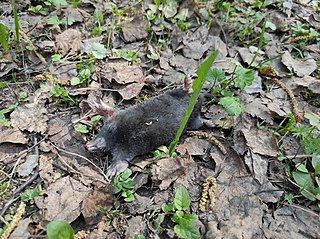
The rose subfamily Rosoideae consists of more than 850 species, including many shrubs, perennial herbs, and fruit plants such as strawberries and brambles. Only a few are annual herbs.

Alexander Georg von Bunge was a Russian botanist. He is best remembered for scientific expeditions into Asia and especially Siberia.
The Spali was an ancient tribe mentioned in classical geography that inhabited the south of today's Ukraine.
Mator or Motor was a Uralic language belonging to the group of Samoyedic languages, extinct since the 1840s. It was spoken in the northern region of the Sayan Mountains in Siberia, close to the Mongolian north border. The speakers of Mator, Motorians or Motors, lived in a wide area from the eastern parts of the Minusinsk District (okrug) along the Yenisei River to the region of Lake Baikal. Three dialects of Mator were recorded: Mator proper as well as Taygi and Karagas. Mator was influenced by Mongolic, Tungusic and Turkic languages before it went extinct, and may have even been possibly influenced by the Iranic languages.

Carl Friedrich von Ledebour was a German-Estonian botanist.

The mountain weasel, also known as the pale weasel, Altai weasel or solongoi, primarily lives in high-altitude environments, as well as rocky tundra and grassy woodlands. This weasel rests in rock crevices, tree trunks, and abandoned burrows of other animals or the animals it previously hunted. The home range size of this animal is currently unknown. Geographical distribution for this species lies in parts of Asia from Kazakhstan, Tibet, and the Himalayas to Mongolia, northeastern China, and southern Siberia. The most common area for this species, however, is Ladakh, India. The conservation status, according to the IUCN, is near threatened because it is considered to be in significant decline and requires monitoring mainly because of habitat and resource loss.

Primula matthioli, synonym Cortusa matthioli, sometimes called alpine bells, is a flowering plant with a wide distribution in the Palearctic, both in Europe and in temperate Asia, from Siberia in the north to Afghanistan, Pakistan and China in the south.

Festuca altaica, also known as the altai fescue, or the northern rough fescue, is a perennial bunchgrass with a wide native distribution in the Arctic, from central Asia to eastern North America. It was first described in 1829 by Carl Bernhard von Trinius. It is under the synonym F. scabrella, the rough fescue.
Carl Anton von Meyer was a German, Russified botanist and explorer.

The Altai mole or Siberian mole is a species of mole in the family Talpidae. It is found throughout the taiga zone of south-central Siberia in Russia, as far south as northern Mongolia and Kazakhstan.

The Circumboreal Region in phytogeography is a floristic region within the Holarctic Kingdom in Eurasia and North America, as delineated by such geobotanists as Josias Braun-Blanquet and Armen Takhtajan.
Crataegus altaica is a species of hawthorn. It is sometimes considered to be a synonym of C. wattiana. Crataegus altaica var. villosa is considered to be a synonym of Crataegus maximowiczii.

Drymocallis is a genus of plants formerly included with the typical cinquefoils (Potentilla). It contains three species known or suspected to be protocarnivorous, but more cinquefoils might eventually be moved here:

Rosa 'Nevada' is a white climbing rose cultivar developed by Pedro Dot in Spain in 1927. It is one of his most successful creations and is named for its colour, as nevada is the Spanish word for "snowy". Its parentage was long under discussion, as Dot introduced the cultivar as a hybrid moyesii, but the cultivar's round, black hips point to its R. pimpinellifolia-parentage. It is probably a cross between Dot's pink hybrid tea 'La Giralda' and the wild rose species Rosa pimpinellifolia var. altaica, but is sometimes still described as a hybrid moyesii.
Lampronia altaica is a moth of the family Prodoxidae. It is found in the Altai Mountains of central Asia, the Ryanggang Province of North Korea and in Japan.
Depressaria altaica is a moth of the family Depressariidae. It is found in Russia.

Chamaerhodos is a genus of plants in the family Rosaceae

Tulipa altaica is a species of tulip found in Russia, Kazakhstan, and China.

Potentilleae is a tribe of the rose family, Rosaceae.
Podismopsis is a genus of grasshoppers in the subfamily Gomphocerinae and tribe Chrysochraontini, erected by Zubovski in 1900. Species have been recorded from central Europe through to temperate east Asia, including Japan.













